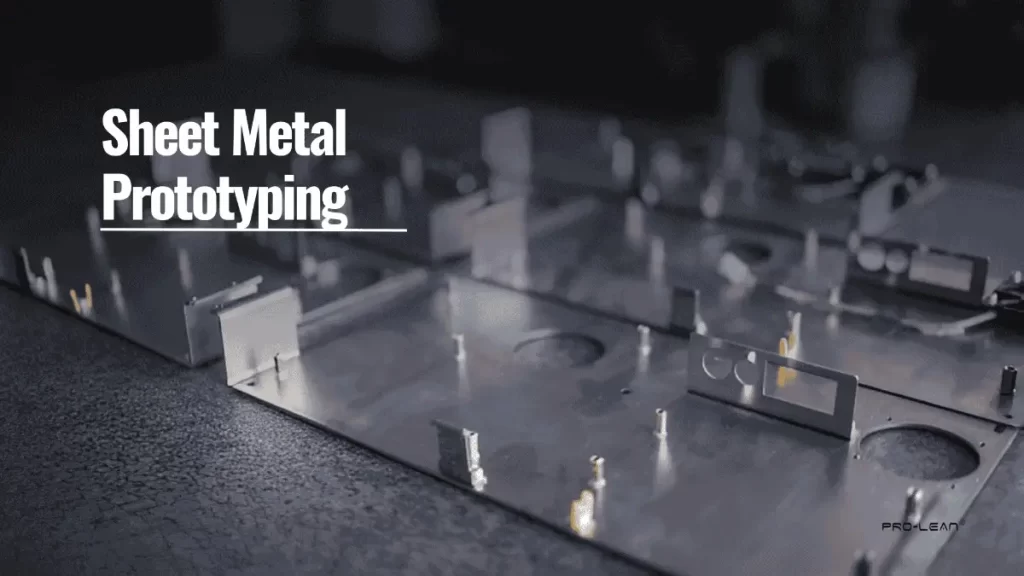
Sheet Metal Prototyping
Sheet Metal Prototyping allows fabricators to create a trial version of a part before commencing full production. The process helps you check the design’s fit, shape, and function early. Modern fabrication tools allow you to make quick changes to the design to avoid costly mistakes later without compromising quality.
Usually, prototypes are made through cutting, bending, and welding methods. These parts closely resemble the final product and perform similarly. Testing these prototypes allows you to identify problems in fit and function before going for mass production.
Nowadays, many industries rely on sheet metal prototype machining. Exclusively, these include automotive, aerospace, electronics, and medical devices. Prototyping helps these sectors improve designs, save time, cut costs, and support better product development.
This guide covers all details about sheet metal rapid prototyping from the designing phases to product development, techniques, benefits, and uses.
What Is Sheet Metal Prototyping?
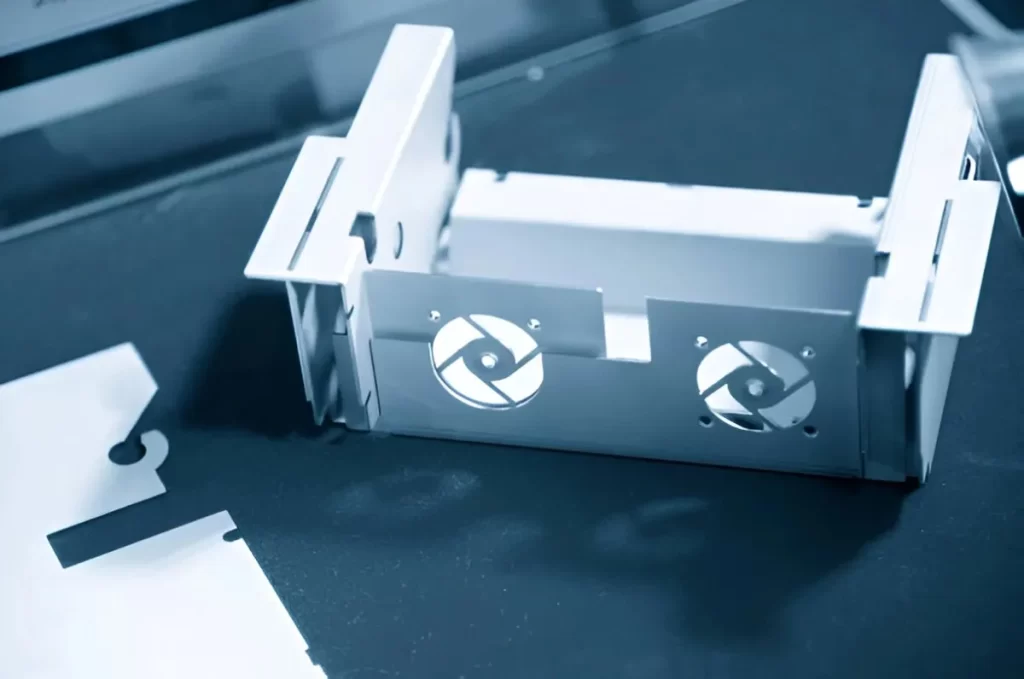
Prototype Sheet Metal Product
Sheet metal prototype fabrication means a test version of a part using thin metal sheets. You cut, bend, and join these sheets to create the required shape. This step helps you see if the design works early on.
The common metals like aluminium, steel, or brass are usually used for prototype production. Each has its strengths, so you must choose what suits the part’s use best.
By making a prototype, you can check how well the part fits, appears, and functions. It’s a smart way to spot any issues before you shift to full-scale production.
Sheet Metal Prototyping Process: Step By Step
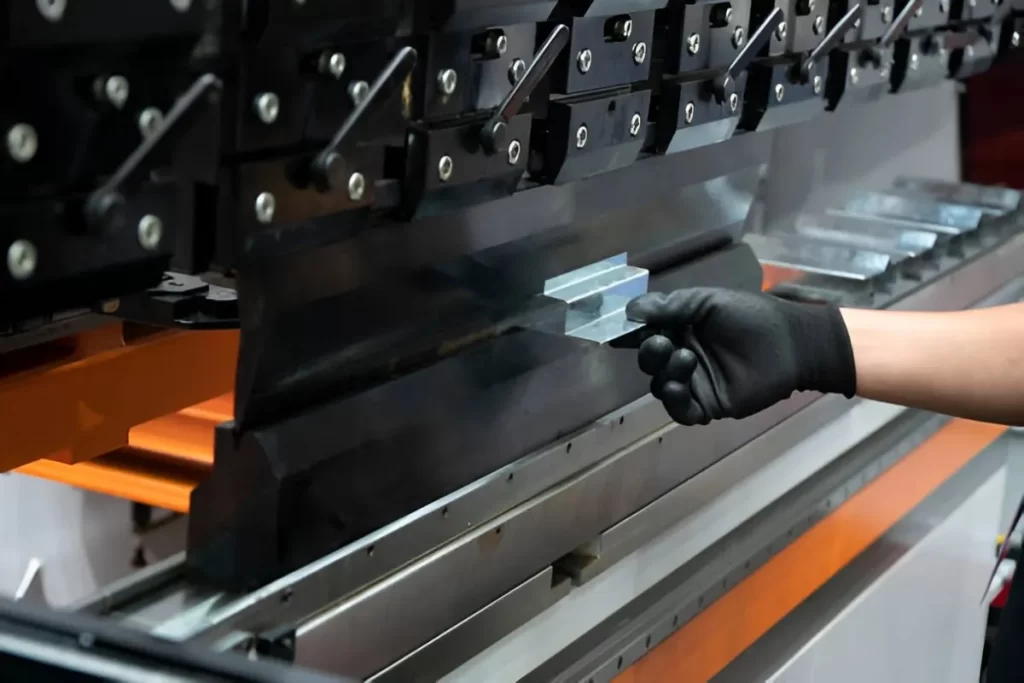
Sheet Metal Protyping Process
As mentioned, the custom metal fabrication prototype process allows you to test your part before production. You can find and fix issues early, save time, and reduce costs later. This process uses the same basic methods as production, but on a smaller scale to make functional test parts.
1: Design and CAD Modelling
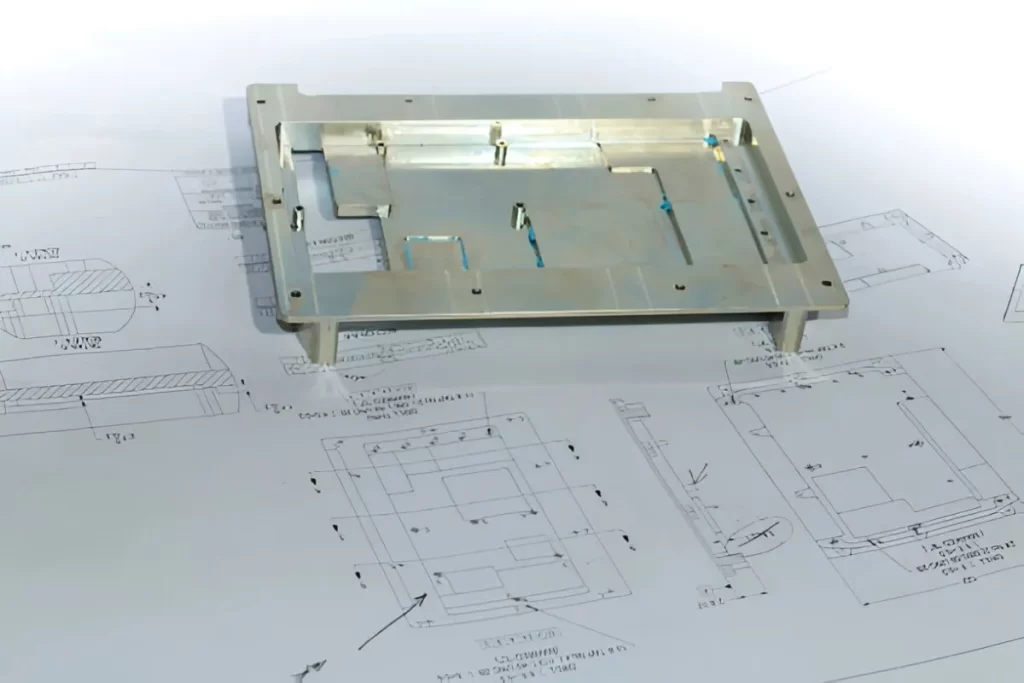
Sheet Metal CAD Design
Design manufacturers first develop a high-resolution 3D model using CAD software. This model consists of every aspect of dimension, angle, and technicality. Using CAD tools, you can emulate how the part will act and pinpoint design issues before anything is turned physical.
2: Selection of the Materials

Sheet Metal Plate Stock
Then find the right sheet metal material. Aluminum, stainless steel, and mild steel are the common choices. These have unique strengths, flexibility, and corrosion resistance; each material differs. You should select material based on the actual use of a prototype. Other metals like brass and copper are occasionally apply for specific purposes and look.
3: Cutting
Next, the metal sheets are cut to the correct size and shape. Laser cutting is often applied as it creates a clean and precise edge and can deal with complex designs. Nevertheless, in other cases, it also needs waterjet cutting. This prevents heat, which may distort the metal.
4: Forming and Bending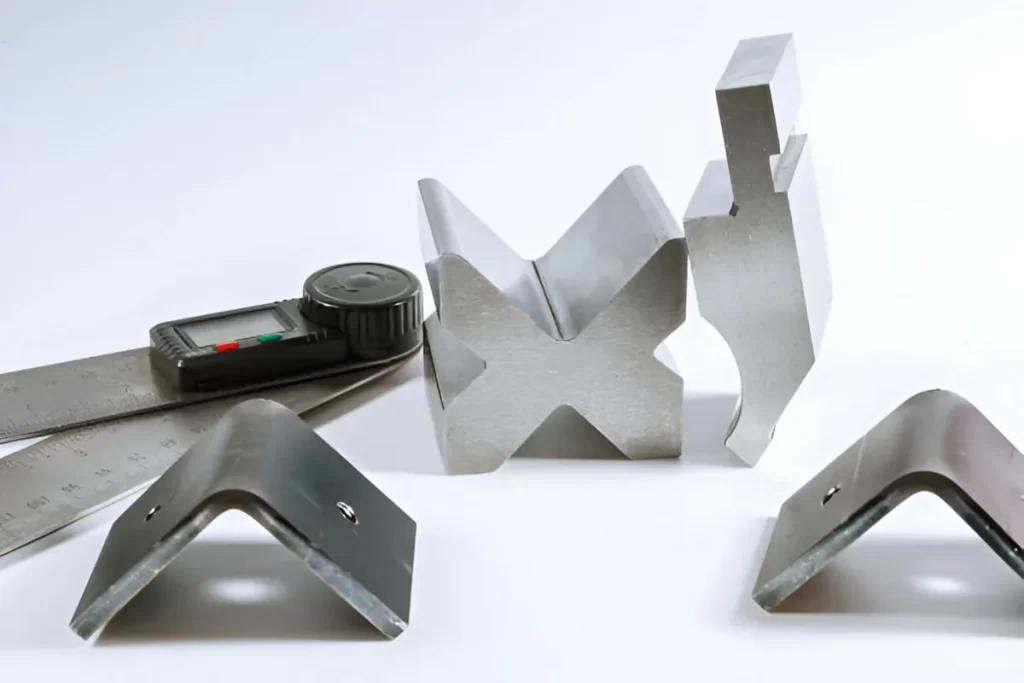
Sheet Metal Bend Prototypes
Based on the design, the metal pieces are bent and shaped after the cutting. Machines such as press brakes bend an object at the required angle using force. In metal, even curves can be made by the use of rollers. However, springback occurs when the metal slightly deforms in the opposite direction after bending. The design must account for this to achieve the correct final angle and shape. It should be considered, as it gives the right final curve.
5: Assembly and Finishing
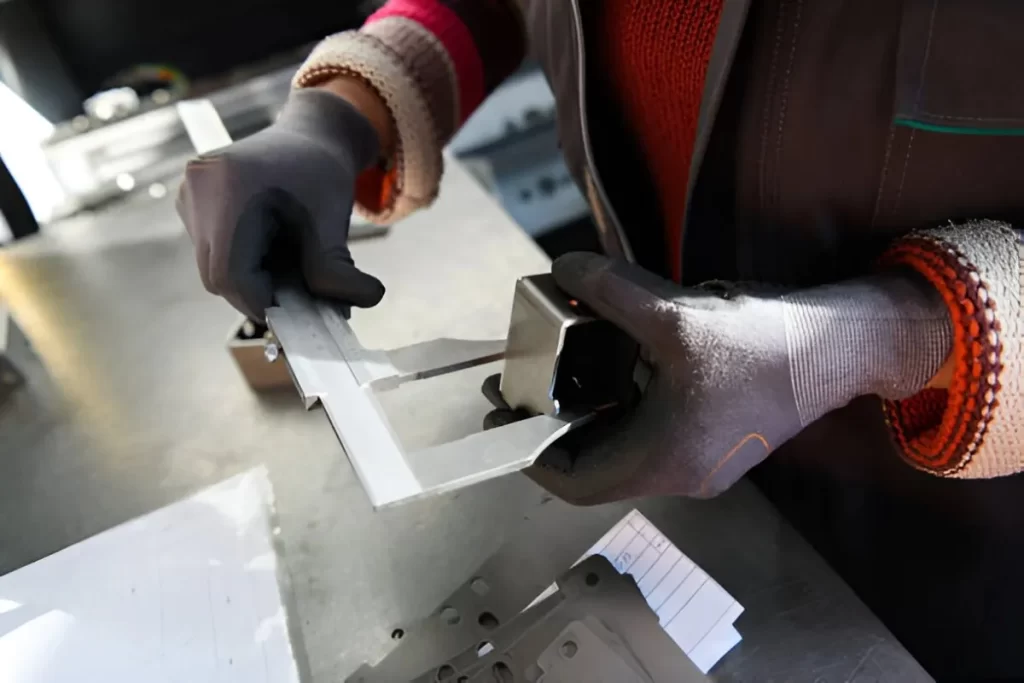
Final Prototype Part Inspection
The assembly takes place with the last assembled parts. Depending on the design, rivets, screws, and welding are included. Besides this, surface finishing treatments such as anodising and powder coating may be required on your prototypes after assembly. These finishes make the finished item safe and improve the prototype’s appearance.
Try Prolean Now!
What Are the Benefits of Sheet Metal Prototyping
Sheet metal prototyping allows you to streamline your design before you invest in full production. It relieves you of expensive errors because you can test and refine basic components. It accelerates development and provides more assurance of the reliability of your end product.
By making a prototype, you obtain immediate feedback. You will know how the part fits and works in a few days rather than a week or more. This will allow you to implement smart change early without delays.
Prototyping is also inexpensive. At this point, there is no need to have costly tooling or moulds. It can experiment with new concepts or make small-scale production without the risk of wasting a lot.
Speedy Results
You can not wait months to watch your part in this modern era. Physical parts are obtained in a short period with sheet metal prototyping. This assists you in testing designs and troubleshooting them before the project commences.
The ability to move quickly implies that you can maintain your project on schedule. It also allows you to act fast in case clients request changes. Such agility puts you above other competitors.
By prototyping faster, you will not spend time guessing, but you can refine it. That results in improved products and more satisfied customers.
Lower Costs and High Quality
Tooling always comes with higher expenses. You can avoid these costs in sheet metal prototyping by employing flexible techniques that do not require special dies or moulds. You obtain the correct parameters without substantial financial exposure.
It is the right approach when you require only a couple of parts. It allows you to sample products without burdening your pocket. You can make small runs to do pilot production or for initial customers.
In addition, this saves you the cost of setting up, and you can use the money elsewhere to improve your design or advertise your product. So, it’s an intelligent solution regarding the quality/budget balance.
Test with the Right Materials
Whether you use the same metals as your end product makes a difference. When your prototype is made of aluminum or stainless steel, you can know how it will act in the real world.
You can test fit, heat resistance, and strength. This means that your tests are not merely hypothetical. You obtain real-time data that indicates whether your design is effective. This keeps you out of surprises when you go into mass production. In sheet metal prototyping, we verify manufacturing processes such as bending or welding on actual materials. This way, you can be sure that your design accounts for real-time use.
Precision & Good Fit
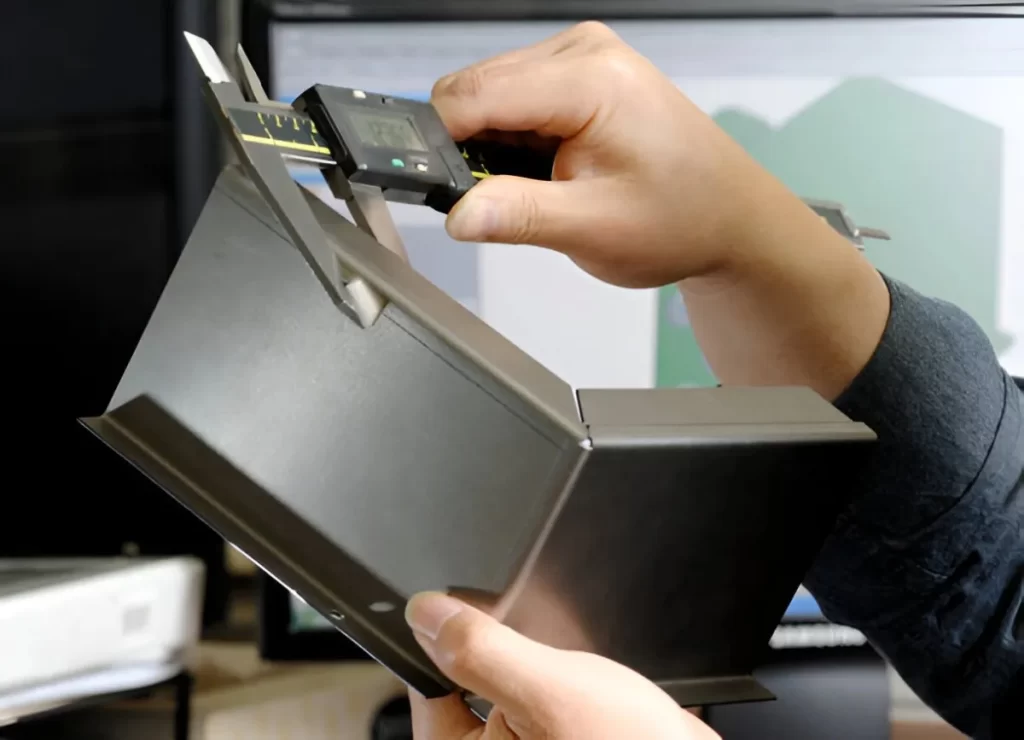
Part Dimensional Checks
Sheet metal prototyping employs machines with tight tolerance capabilities, which cut and shape the parts. This implies that your prototype will assemble like the final part.
It’s crucial, particularly when your design has complicated features and tight spaces. There is uniform quality, implying you can make and contrast several prototypes. This assists you in making the best design before proceeding.
Standard Techniques Used in Sheet Metal Prototyping
Sheet metal service uses several key fabrication methods. These techniques help you quickly create accurate prototype sheet metal parts and test them thoroughly. Some of the common methods include;
Laser Cutting
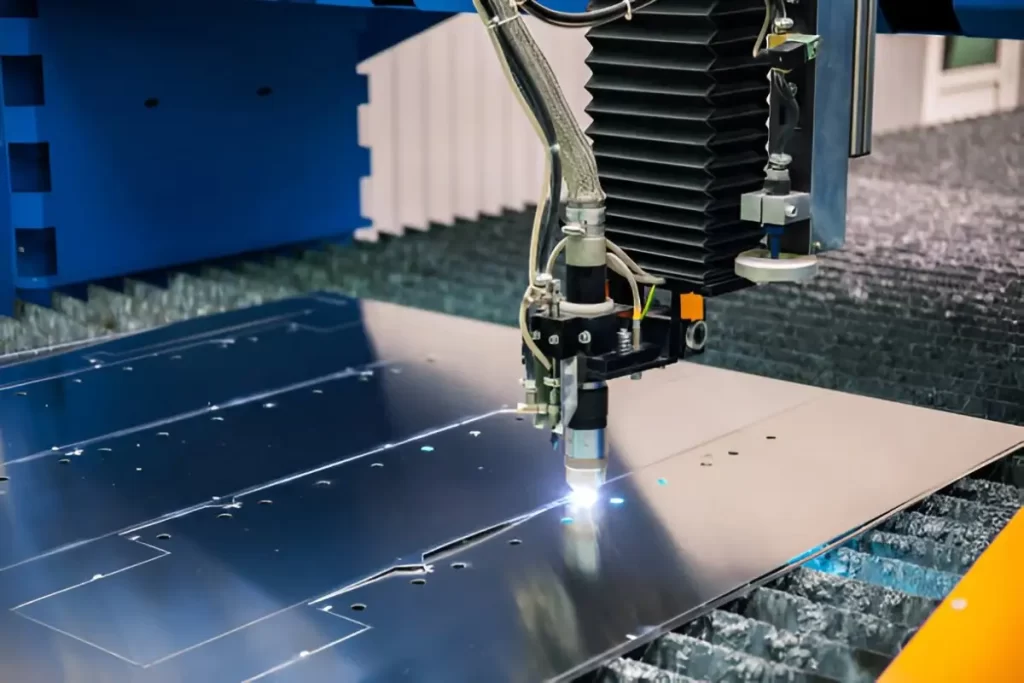
Laser cutting involves cutting metal sheets with an intense, focused light beam. It is capable of creating shapes in a fast, highly detailed, and specific manner. This process is most effective with thin metals, although it can also be applied to medium thickness. It heats the material; thus, it is good to inquire whether your material is heat-proof.
Waterjet Cutting
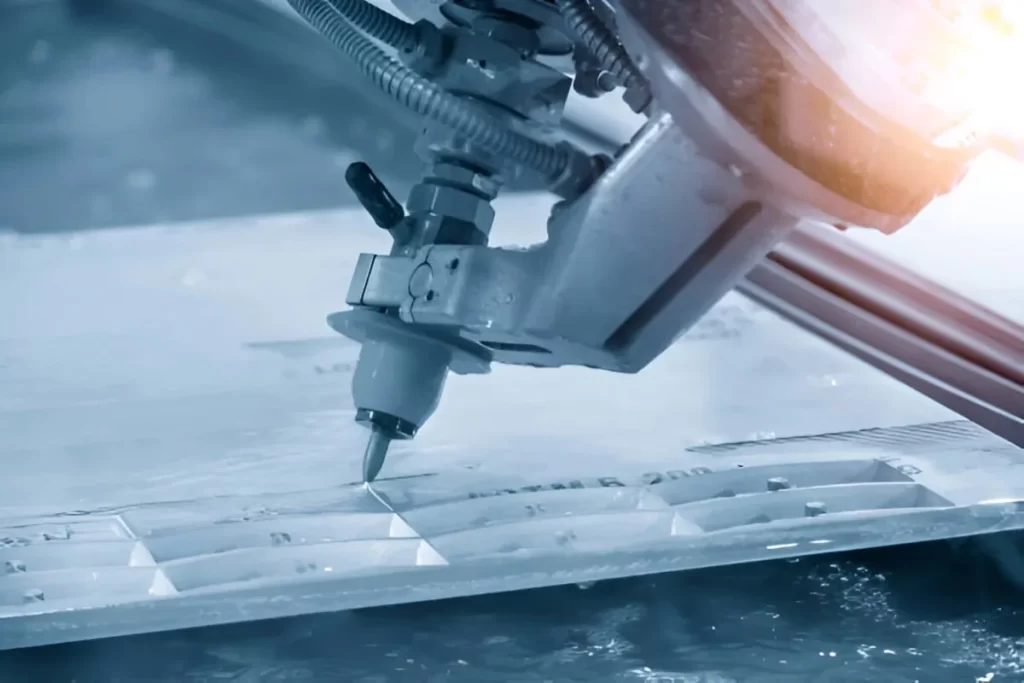
Waterjet Cutting
The water jet cutting cuts metal using high-speed water mixed with some grit. It works well with metals that may warp or otherwise be impacted by heat. Waterjets may be used to cut thicker sheets and complex shapes at a slower rate than laser cutting.
CNC Turret Punching
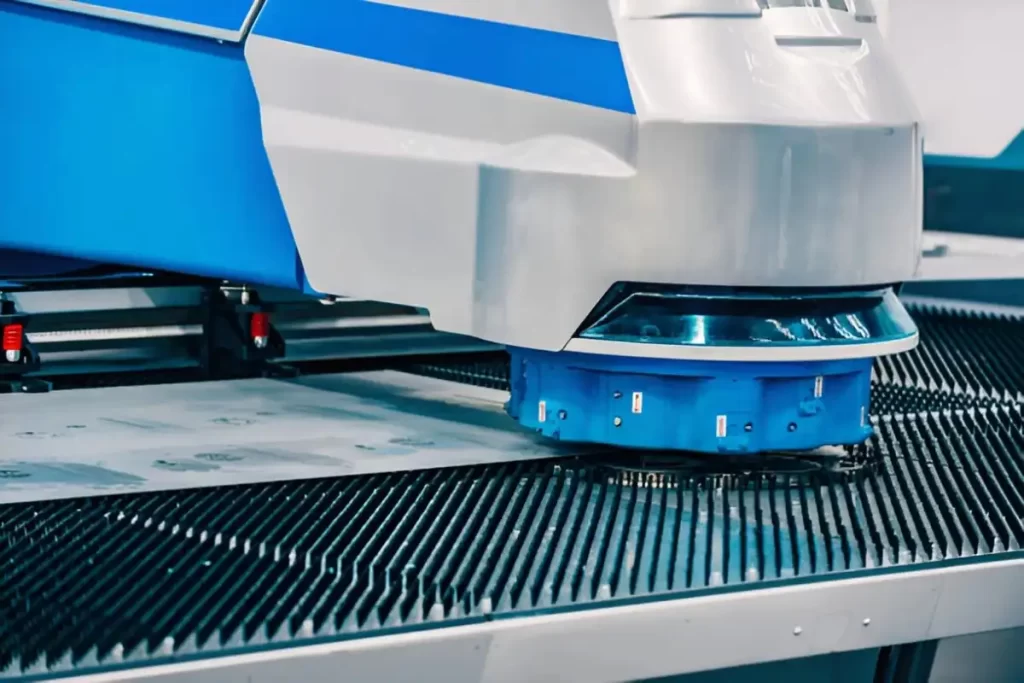
CNC Turret Punching
CNC Turret punching is performed on a machine with many tools to make holes and shape quickly. It is cut under computerized control. Hence, accurate and regular cuts are made. It is a suitable process where you need holes or cutouts of the same type.
Bending and Forming
Bending and forming are required after the flat metal sheets are cut. Press brakes bend the metal at certain angles, while rollers form sheets into smooth curves. Bending needs to be done carefully, as metal may spring back slightly.
Welding and joining
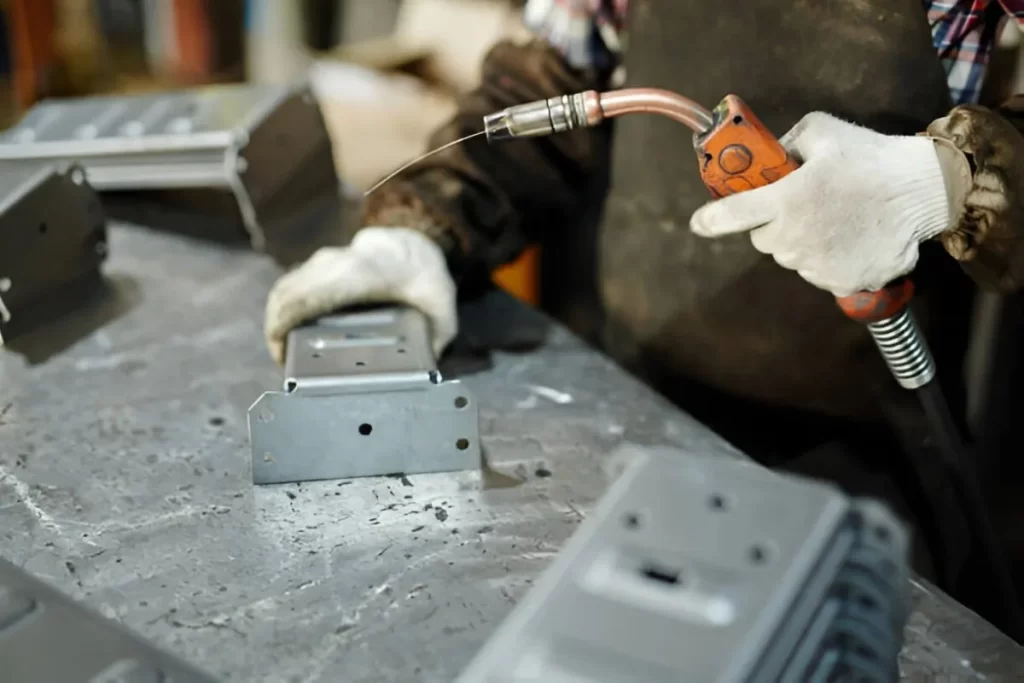
Gas Welded Metal Part
Both of these techniques are used to construct elaborate components. Welding melts metal and makes a strong bond that lasts. Other times, you fasten parts with rivets or bolts. These allow you to dismantle the prototype in the future when you need to change it, in case of any adjustments in the testing.
Surface Finishing
The finishing process protects your prototype and improves its appearance. A hard, coloured topper is added through powder coating. While anodizing hardens aluminum and makes it corrosion-resistant, other finishes, such as polishing, smooth the surface. Finishes make your prototype look durable, just as the final product.
Try Prolean Now!
Material Selection for Sheet Metal Prototyping
Choosing the right material remains critical to making a prototype that behaves like the final product. You must use the same prototype material as the production part whenever possible. Also, evaluating their strength, flexibility, and corrosion resistance gives meaningful results.
If you use a different material, the prototype may not reflect how the real part will perform. This can lead to costly errors during manufacturing and use. However, for early mock-ups, you can use cheaper, easier-to-work metals.
When choosing a material, consider:
- Mechanical properties like tensile strength and hardness
- How easily it can be formed and welded
- Resistance to corrosion and chemicals in the harsh environment
- Electrical and thermal conductivity, if relevant
Common choices of materials include;
- Aluminum: It is known for its lightweight and corrosion resistance
- Steel: Ideal for strength and durable prototypes
- Stainless Steel: Useful for medical-grade prototypes and offers good corrosion resistance.
- Copper and brass: Both have good conductivity and a decorative finish.
Practical Applications of Sheet Metal Prototyping
Sheet metal prototyping to test form, fit, and function before full-scale production. It helps reduce risks and development time across several industries. Here are the common industries that make use of this technique.
Automotive Industry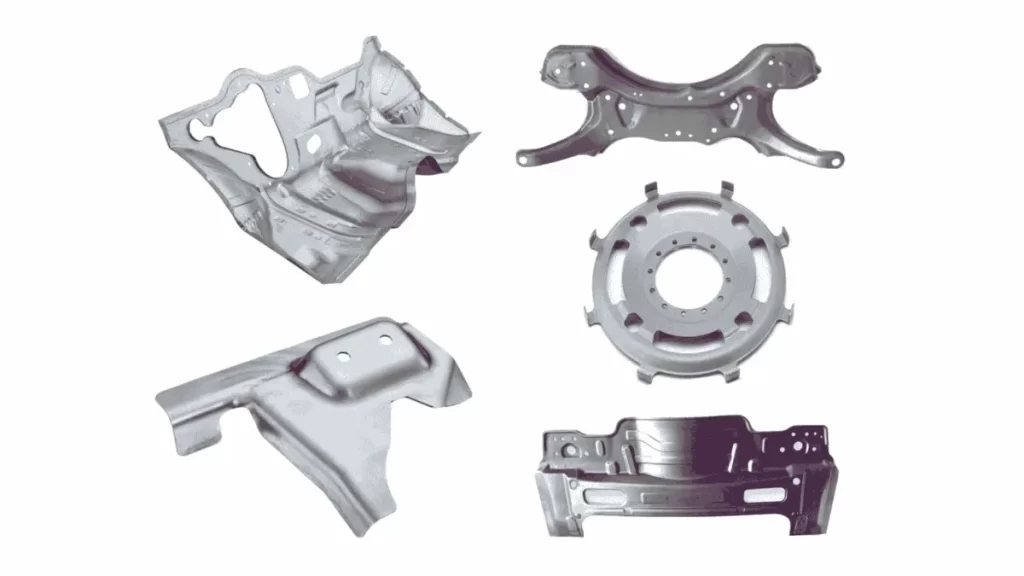
Automotive Prototypes
Automakers use sheet metal prototyping for brackets, body panels, and enclosures. These components must accurately support a good fit and be vibration and impact-resistant. Prototyping allows automotive engineers to ensure that it can be assembled and is durable before manufacturing costly tooling. Initial input improves design and reduces errors in production.
Aerospace Sector
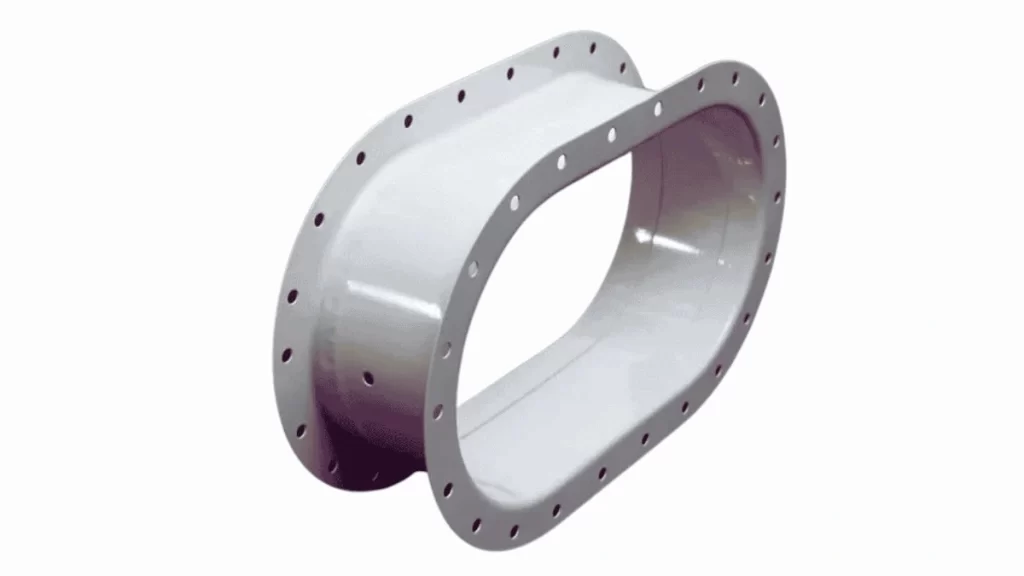
Aerospace Sheet Metal Prototype
The aerospace industry continuously acquires lightweight and strong parts. The sheet metal prototypes are used to test the essential parts of the equipment, like frames, engine mounts, and shielding panels. Such prototypes confirm structural stability and withstand extreme conditions. Rapid prototyping validates that aircraft parts are made to meet safety regulations and are not overweight.
Manufacture of Medical Devices
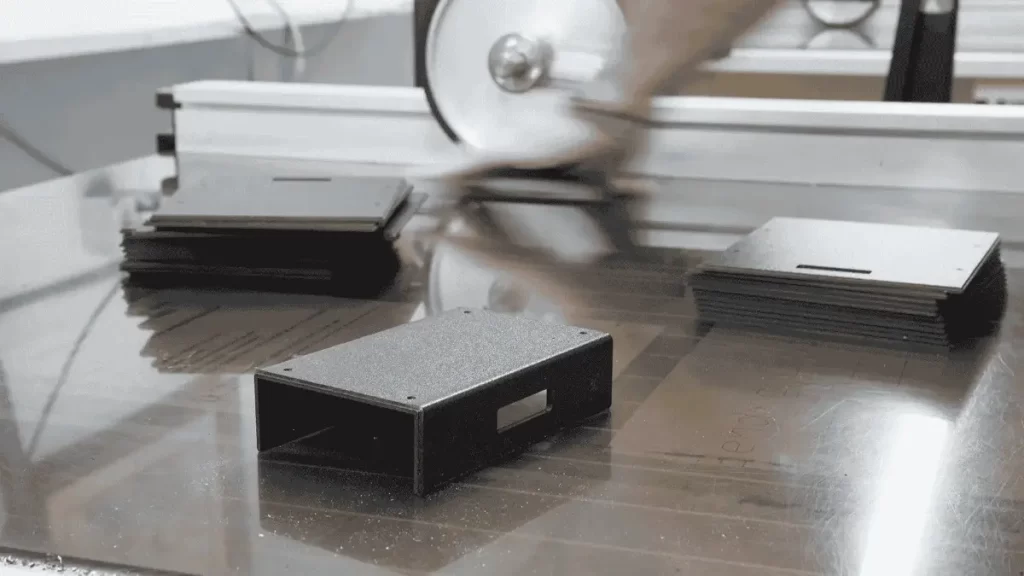
Medical Prototype
Medical equipment and implant devices have precise specs and must be highly reliable. Surgical tools, housings, and diagnostic equipment are essential prototypes. It can be used to test usability, sterilization, and durability. The rapid prototypes speed up the approval process through functional verification before mass production.
Consumer Electronics
Sheet metal prototyping produces the protective hard case used in phones, laptops, and other gadgets. Prototypes are used to test fit, heat dissipation, and electromagnetic shielding. They also allow the designers to improve aesthetics and ergonomics.
Industrial Equipment
Industrial guarding, supports, and electrical enclosures are all initially tested with prototypes. They must guard machinery and individual components and fit into a complex assembly. Design feasibility and safety tests in extreme conditions are confirmed by prototyping.
How to Optimize Your Designs for Sheet Metal Prototypes
When you design sheet metal prototypes, emphasize parts that match the fixture closely. Keep shape, size, and performance in mind. Do not make alterations that are only effective for the prototype and cause future problems.
Consider the production of the part in the actual product sound. Apply good design early. This is time and money-saving. An inexpensive and simple design will facilitate the process of manufacturing. They also prevent errors and time delays in production.
Liaise with your prototyping team. Their recommendations will allow you to save money and design. The teamwork ensures that your prototype is feasible and can be mass-produced.
Design for Manufacturability (DFM) Basics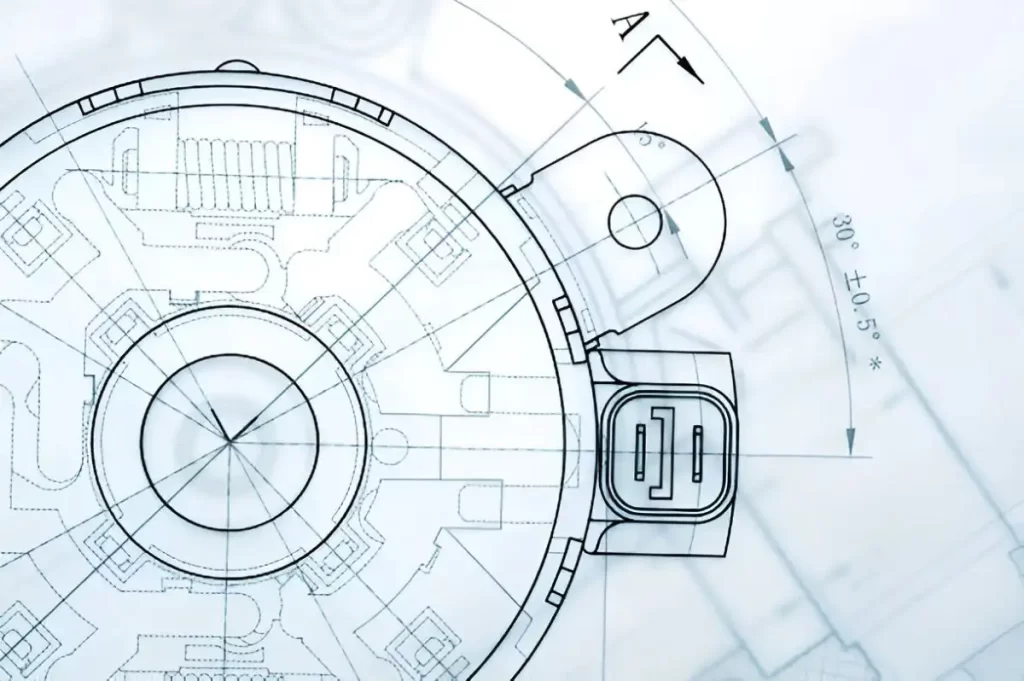
Design Footprint of Sheet Metal Part
The design for manufacturing can make your design easier to produce. The bend radii should be consistent to prevent weak points. Do not complicate your design with tight tolerances. This saves your time.
Adjust holes and bends to a typical tooling. Production by standard tools implies quicker and lower-cost production. Keep the shapes as simple as possible to avoid needing special equipment. Make your design basic. This helps the prototype be as close as possible to the production parts. You also save the redesigning for later.
Avoiding Common Design Mistakes
Circle sharp interior corners. The ends of corners become rounded to alleviate stress and prevent cracking. Select a proper material depending on the conditions of your part. Consider strength, corrosion, and heat resistance.
Provide ample clearance of parts. This avoids issues of assembly. Use standard thickness sheets. This reduces the costs and hastens the production process.
Minimize the joints or welded parts. Fewer joining reduces labour and tooling costs. Ensure that you use a design that is representative of the production process. This prevents the expensive revisions.
Co-operate and Cut Costs
Be candid with your prototyping partner. They can identify how it can save materials or make production feasible. Early feedback from experts avoids costly mistakes.
Your partner can suggest superior materials or procedures to fit you. So you can create a prototype that corresponds to your aims and manufacturing conditions.
Moreover, teamwork will ease the entire process. It assists you in introducing your product faster and with fewer complications.
Alternative Techniques to Sheet Metal Fabrication
Sometimes, sheet metal fabrication is not the best fit for your project. Depending on your design and needs, other methods might work better. Here are some common alternatives you can consider.
Injection Moulding
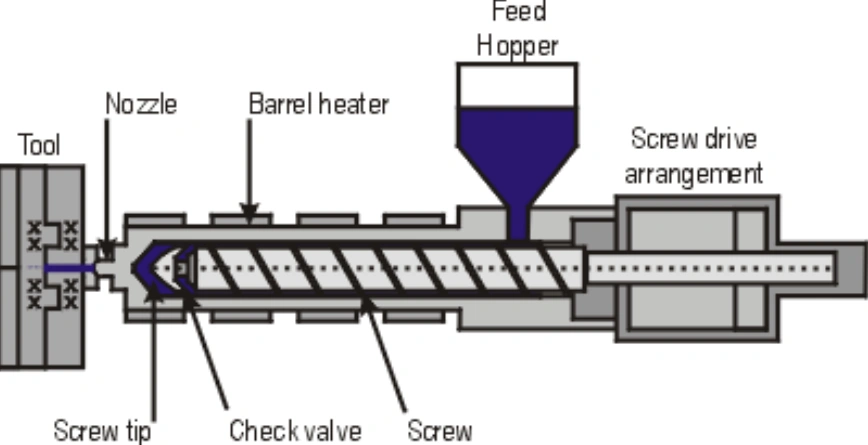
Plastic injection moulding is a good option for making mass-produced plastic prototypes. It involves injecting molten plastic into a mould die. It’s a quick process with limited waste and makes detailed parts speedy. When you require lots of identification, go for injection molding. Remember that the mould costs will be expensive, but the cost per part will be lower with volume.
Prototyping by 3D printing
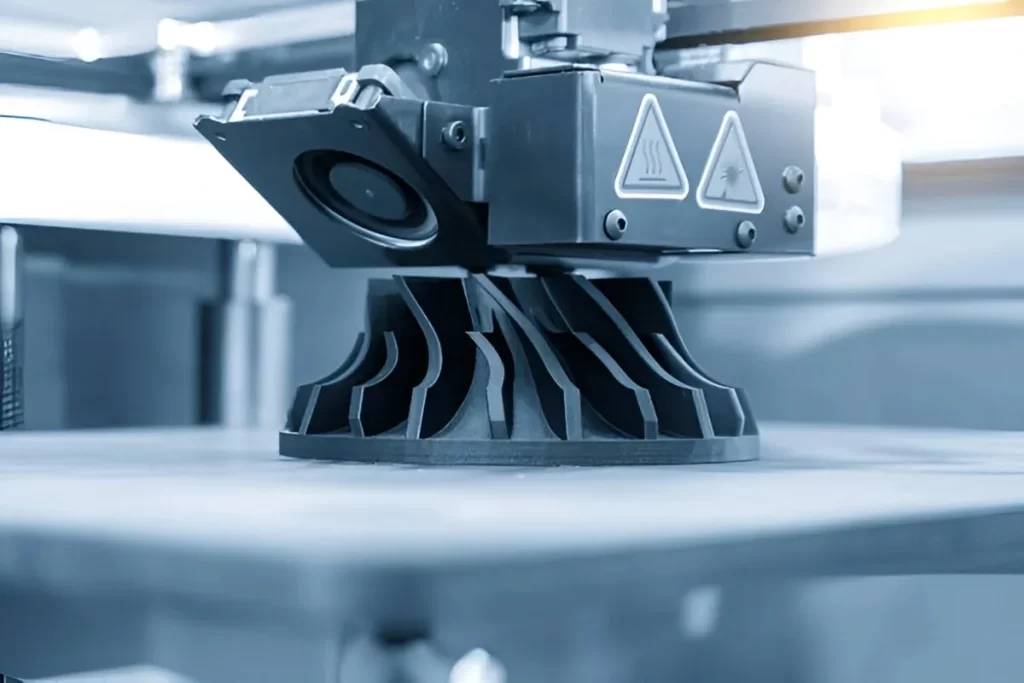
3D printing involves the construction of parts out of plastic or metal through a layered process. It allows you to create complicated shapes without special equipment, and is best for low-volume parts. The finish may require additional work and can be slow compared to other processes. However, it does not waste time tooling and changing the design.
Casting Prototype

In casting, the molten metal is poured into a shaped mould. The metal becomes hard when cooled, and the part is shaped like a die. It applies to complex-shaped parts and thick parts. Aluminum and steel are most often suitable for casting. It is perfect for medium or larger runs where strength is essential.
CNC Machining Prototyping(Subtractive Manufacturing)
CNC machining uses computer-controlled, more precise work and operates with various metals and plastics. CNC is ideal for use in prototypes and short series. It facilitates tight tolerances and a uniform surface finish of products. Although the prices vary with the size and complexity of the parts.
Forging
Forging involves shaping metal by applying intense pressure, usually with heat. It ensures parts’ stability as it refines the metal grain. Gears and shafts are heavy-duty items, and they are suitable for forging. It may need special equipment, but it is effective for medium or large production volumes.
Speed Up Your Product Development with Prolean Tech’s Sheet Metal Prototype Services
Whether you need custom parts or simple components, we’re here to help. At Prolean Tech, we carefully listen to your needs and provide practical solutions to ensure your prototype is precisely as you want.
From design through to finished prototype, we keep the process smooth, transparent, and cost-effective. This helps you get your parts faster and avoid unnecessary delays. Contact us today for a quick quote and let us help you move your product forward with reliable, rapid prototyping services.

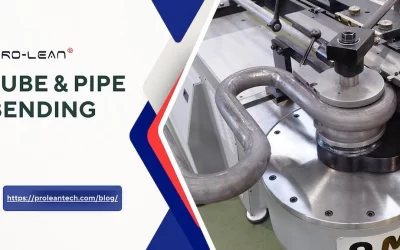
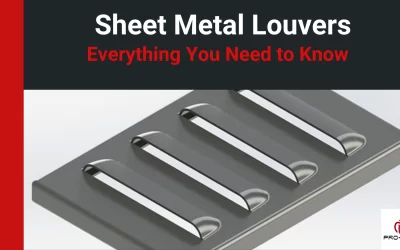
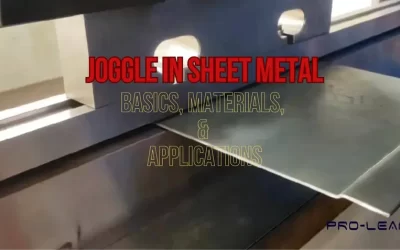
0 Comments